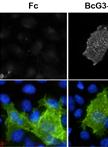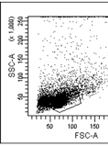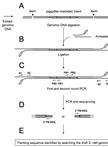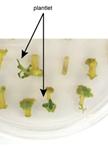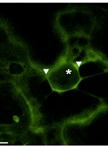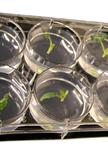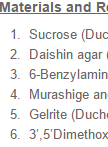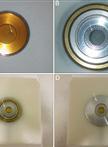Improve Research Reproducibility A Bio-protocol resource
- Protocols
- Articles and Issues
- About
- Become a Reviewer
Past Issue in 2014
Volume: 4, Issue: 1
Biochemistry
Cell Surface Protein-protein Binding on COS-7 Cells
Examination of interactions between a transmembrane protein and a soluble protein by pull-down or immunoprecipitation assays can be tricky and complicated due to the detergent extraction of membrane proteins during the lysate preparation step. The choice and concentration of detergents must be determined empirically and the procedure can be burdensome. Here, we describe a simplified binding assay by expressing the membrane protein of interest in COS-7 cells and applying detergent-free solutions containing an extracellular protein to be tested. The binding is then examined by immunocytochemistry.
Immunology
T Follicular Helper Cell Coculture Assay
T follicular helper (Tfh) cells constitute a distinct subset of CD4+ T cells specialized in providing help to B cells in germinal centers. Phenotypically, Tfh cells are characterized by their high expression of the chemokine receptor CXCR5 that allows their migration into B cell follicles as well as high expression of PD-1, BTLA, the co-stimulatory molecules ICOS and SLAM and the transcription factors BCL6 and cMaf. Tfh cells are the main producers of IL-21 as well as other cytokines like IL-4 and IL-10 critical for B cell survival and differentiation. Tfh cells drive somatic hypermutation and the generation of long-lived memory B cells and plasma cells having an essential role in the development of protective immunity. Developing a coculture system to measure the effects of Tfh-cell mediated B cell help is of great interest to further our understanding of Tfh-B cell interaction and to allow for the manipulation of culture conditions to investigate the potential effect different microenvironment signals or ligand/receptor interactions could have on Tfh cell function.
Microbiology
Detection of piggyBac-mediated Transposition by Splinkerette PCR in Transgenic Lines of Strongyloides ratti
Splinkerette PCR (spPCR) is a newly developed and efficient method to ascertain and characterize genomic insertion sites of transgenes. The method described in this protocol was successfully applied to confirm piggyBac transposon-mediated integration of transgenes into chromosomes of the parasitic nematode Strongyloides ratti. This work is described in detail in Shao et al. (2012) and presented here in a simplified diagram (Figure 1). Using this method, chromosomal loci of integration were determined based on target site and 5’- and 3’ flanking sequences. Therefore, spPCR can be a useful method to confirm integrative transgenesis in functional genomic studies of parasitic nematodes. Potter and Luo (2010) contains a protocol for use of spPCR to detect and map piggyBac transposon-mediated chromosomal integrations in Drosophila, and was the source of our method for Strongyloides. The splinkerette- and piggyBac-specific oligos described in that reference could be used without modification in Strongyloides. For interested readers, a general review of the biology of parasitic nematodes in the genus Strongyloides may be found in Viney and Lok (2007), and a methods-based article on S. stercoralis as an experimental model, with information on transgenesis, may be found in Lok (2007).
Plant Science
Potato Transformation
This is a protocol to produce stable transgenic potato plants (Solanum tuberosum cv. Désirée) by Agrobacterium-mediated genetic transformation, which is established based on a method described by (Jung et al., 2005) with some modifications. Agrobacterium tumefaciens strain LBA4404 carrying the desired construct is used to infect internodal explants to produce stable transgenic potato plants. Plantlet screening and molecular analyses are employed to confirm the expression of transgene in generated transgenic potato lines.
Subcellular Localization Experiments and FRET-FLIM Measurements in Plants
Determining the localization of proteins within living cells may be very essential for understanding their biological function. Usually for analysis of subcellular localization, a construct encoding the translational fusion of a cDNA of interest with a fluorescent protein (FP) is engineered, transiently expressed in plant cells and examined with confocal microscopy.In co-localization and interaction studies, two plasmids, each encoding one of the potential interacting/binding partners tagged with an appropriate pair of fluorescence proteins (for instance CFP/YFP) are co-expressed in plant cells. If proteins co-localize in certain cellular compartments it does not necessarily mean that they bind/interact to each other, therefore an additional technique should be applied for in vivo verification of putative interaction, e.g. Fluorescence Lifetime Imaging (FLIM) to detect Fluorescence Resonance Energy Transfer (FRET).The protocol describes in detail the method that has been used to verify interaction between the bacterial effector HopQ1 and a 14-3-3a host protein and additionally to check the necessity of the central serine in the canonical 14-3-3 binding site within HopQ1 (Giska et al., 2013) for this association.
In vitro Nematode Infection on Potato Plant
Potato cyst nematodes (PCNs; Globodera rostochiensis and G. pallida) are devastating pests that infect potato root. We describe an in vitro assay for PCN infection on potato plantlet in tissue culture. This method is useful for studying nematode parasitism on potato and for investigating responses of potato clones/lines to PCN infection.
Agrobacterium-mediated Transformation of Strawberry
Traditional breeding for improvement of strawberry (Fragaria x ananassa) is difficult because strawberry is an octoploid, hybrid species. Genetic modification of strawberry would though be a promising alternative for obtaining the desired improvements in existing elite strawberry cultivars (Schaart et al., 2011). The availability of suitable genes for trait improvements in strawberry has however been a rate-limiting step until recently, but with the completion of the sequencing of the genome of woodland strawberry (F. vesca) (Shualev et al., 2011), we now have access to a treasure chest with valuable candidate genes. For strawberry, methods for genetic transformation have originally been described by Nehra et al. (1990) and James et al. (1990) and success of transformation was shown to be highly cultivar dependent. The latest progress in strawberry transformation is reviewed by Husaini et al. (2011). In our lab transformation of strawberry is based on the method for shoot regeneration described by Passey et al. (2003) and the use of the supervirulent Agrobacterium strain AGL0 (Lazo et al., 1991). We mainly make use of the strawberry transformation as a tool for functional analysis of candidate genes. For this the cultivar Calypso is a very suitable genotype because of its high transformation efficiencies (up to 100%) and ever-bearing fruiting characteristic, which provides a continuous supply of strawberry fruits once the plants start flowering.
Biolistic Bombardment for Co-expression of Proteins Fused to YFP and mRFP in Leaf Epidermal Cells of Phaseolus vulgaris ‘Red Mexican’
Biolistic bombardment is based on coating of tungsten or gold particles with DNA and delivery of these “biobullets” into living plant cells under high pressure (Sudowe and Reske-Kunz, 2013). This method enables transient expression of a DNA construct encoding fusion of the protein of interest to a fluorescence protein e.g. GFP for microscopic approaches. Usually it is performed for plants for which infiltration with Agrobacterium tumefaciens does not work efficiently e.g. model plant Arabidopsis thaliana (Ueki et al., 2009). Although transfection rate is relatively low, it is still sufficient to analyze subcellular localization of the protein of interest under a fluorescence microscope. Here we present the protocol that was optimized for Nicotiana benthamiana and also successfully applied to Phaseolus vulgaris (Giska et al., 2013).


